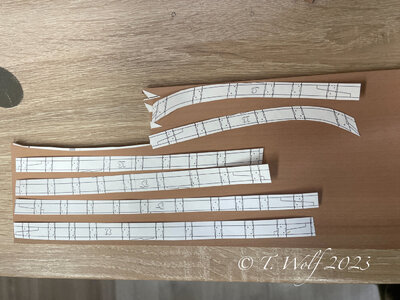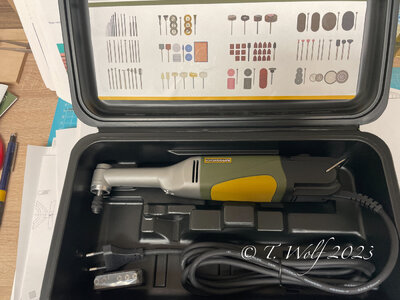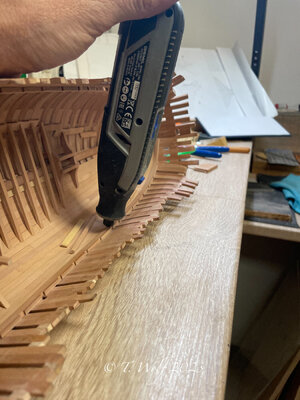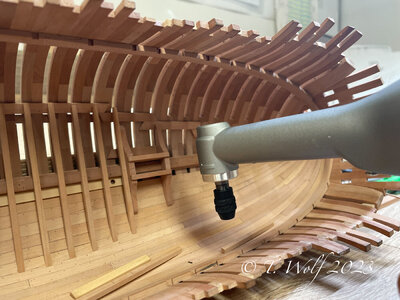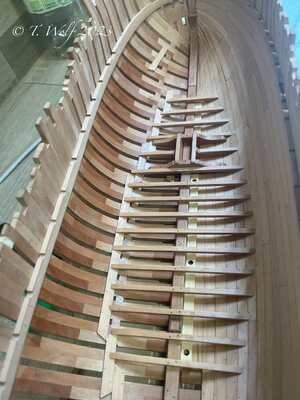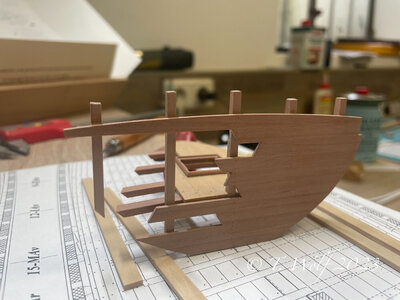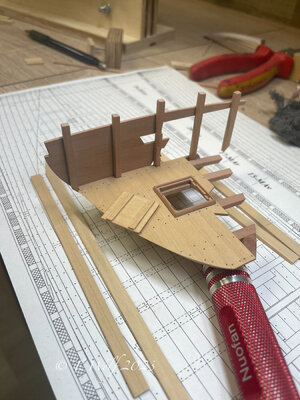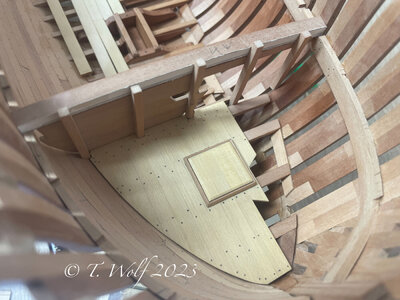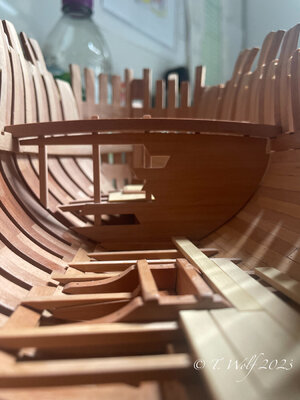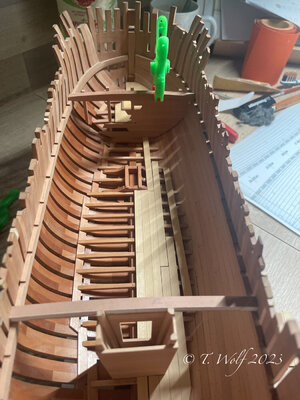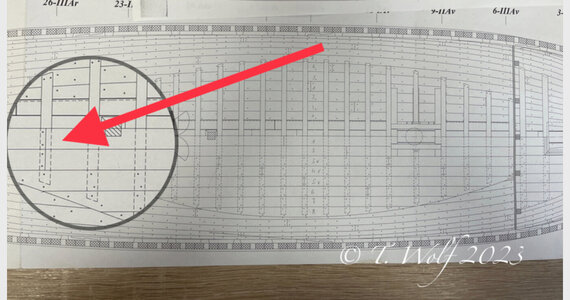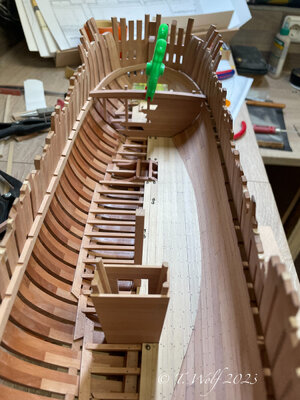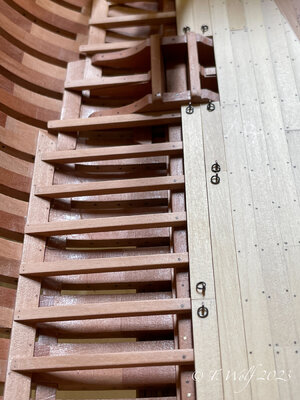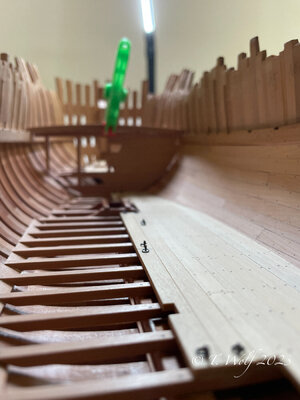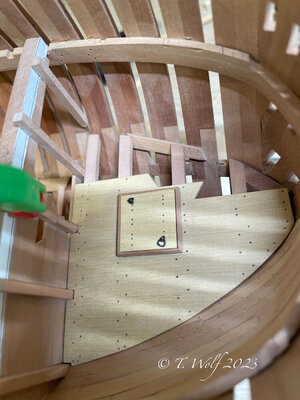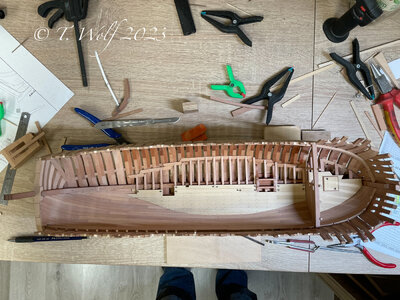This is just excellent work in all regards Tobias! My respect!
Dittowonderful work, thanks for the explanations
Really nice progress, Tobias. The result is looking excellent.
Very good result - on my next project, I will try this treenailing method - slightly more work, but in my opinion with a better (more regular) result
Beautiful precise work Tobias
Beautiful work Tobias, I agree with all the previous comments and posts. Your planking and treenailing is superb. I’ll have to remember your method of using tape for lining up the treenails. Also the method you use, thanks for showing us.
Amazing precision! Almost makes me wonder if the original shipbuilders themselves would be embarrassed by their own efforts?
Witaj
Tobiaszu tylko dwa słowa pięknie, pięknie .Pozdrawiam Mirek
Hello
Tobias just two words beautifully, beautifully .Regards Mirek
Fantastic work! I am getting ready for some treenailing and decided to give your method a whirl on some scrap. Amazing result and so easy! A handheld drill, disk sander, flush cutter, a little sanding, and it looks fantastic. I tried birch vs. bamboo toothpicks, birch was noticeably better. They came out slightly darker than bamboo with some Danish oil and just looked cleaner. Thanks for sharing this cool, simple technique; I put my draw plate away.
Good morning Tobias. Immaculate. I concur with all the other comments. Cheers Grant
“Nice&Precise” as usual, Tobias. A lust for the eyes.
Regards, Peter
Wow I am overwhelmed by your positive response and it makes me blush slightly, thank you guys.
At the moment I'm continuing with the interior work and therefore I can't show much news. There are a lot of preparations to which I will bring a detailed update in due course.
Just a few impressions for you.
The cross beams are still all in place and all the wooden nails for the floorboards are also in place, 1477 nails in total.
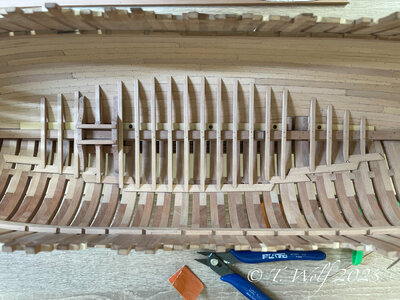
Prepare the front bulkhead.
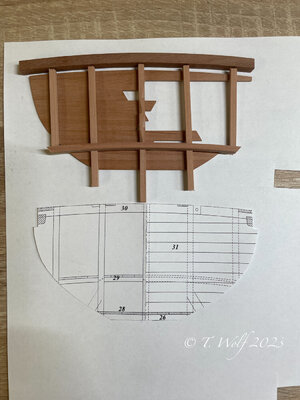
Breast hooks and crossbars for the front tween deck.
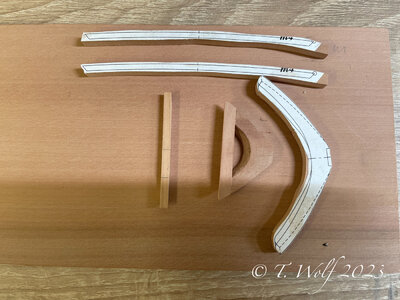
And now the (sorry I don't know the technical term - Balkweger) support for the crossbeams of the main deck.
